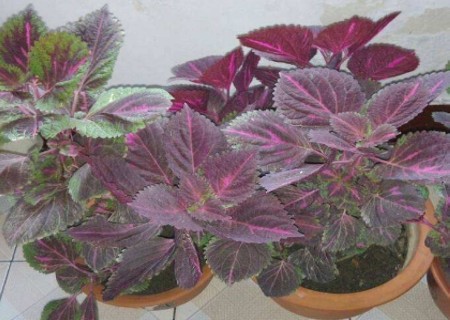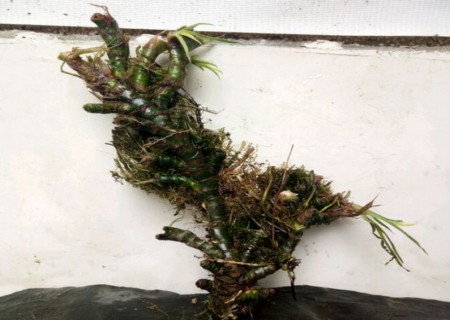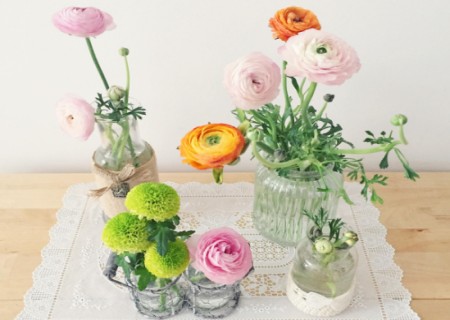Is perilla easy to raise? How to raise potted perilla?
In the small balcony gardens of many families, you can often see a clump of purple plants. Take off the top leaves and put them in the boiled rice porridge. A pleasant fragrance makes people feel refreshed all morning.
This purple plant planted in a flowerpot is called perilla, also known as perilla, red perilla, is a labiatae plant, with a specific fragrance, its stems, leaves and seeds have good edible and medicinal value, folk use it to extract oil, make spices and edible. According to traditional Chinese medicine, perilla has the effects of relieving cold, dispelling qi and resolving phlegm, nourishing stomach and middle, and can be used to treat cold, cough and phlegm, chest tightness, vomiting, fish and crab poisoning and so on.

So, is perilla easy to raise? In fact, perilla is easy to breed. It can grow well in front of the house, behind the house and on the edge of the ditch. Raise a pot of perilla in the balcony, not only can experience the plants on the tip of the tongue, but also can treat a variety of diseases, is a good choice.
Perilla summer light red flowers, with a specific fragrance, with stems, leaves and seeds used in medicine, cough and expectoration and diuresis. Cultivated in all parts of China, wild in the provinces south of the Yangtze River, found in villages or roadsides. Because perilla has strong adaptability, lax soil requirements, good drainage, sandy soil, loam, clay soil, before and after the house, the edge of the ditch, fertile soil cultivation, good growth. Vegetables are the best crops in the previous crop, and fruit trees can be planted under young forests.
1. Lighting
Perilla is not strict with light and can grow in shady places, but it is more beneficial to the growth of leaves in long sunshine and sunny environment.
2. Temperature
Perilla is a high-temperature and low-temperature-tolerant vegetable, which can still grow well when it is hot in summer in the north. The seeds can germinate when the soil temperature is above 5 ℃, the suitable germination temperature is 18-23 ℃, the seedling stage can tolerate the low temperature of 1-2 ℃, and the optimum temperature at flowering stage is 22-28 ℃, but the plant grows slowly at lower temperature.
3. Soil
Perilla has a strong ability to adapt to the soil, you can choose sunny, well-drained soil, such as loose and fertile sandy loam, but heavy clay had better not be planted, the growth will be poor.
4. Watering
Perilla is more resistant to waterlogging and likes a humid environment. It grows better when the relative humidity of the air is 75%-80%. If the air is too dry, the stems and leaves will be thick and hard, the fiber will increase and the quality will become worse. Especially in summer, it must be watered frequently. Pay attention to drainage in the rainy season, dredge the operation road, and prevent stagnant water from disorderly roots and defoliation.
5. Fertilizer
Perilla is not strict on soil and can grow on sandy soil, loam or clay loam. Perilla treatment of sufficient base fertilizer, in the whole growth period, according to the growth, but also need to topdressing 3-5 times of organic fertilizer, and can spray foliar fertilizer. Perilla frutescens for a long time is relatively short, the whole grass can be harvested two and a half months after planting, and the whole grass is used as medicine, so it is mainly nitrogen fertilizer.
6. Diseases and insect pests
Perilla rarely has diseases and insect pests, but it is occasionally infected with rust. If rust occurs, topiramate can be used for prevention and control, twice a week. If grasshoppers and small green worms appear, they can be caught manually in small amounts.
7. Harvest
When the leaves of perilla grow to a certain size, they should be harvested and eaten in time, otherwise the taste of the leaves becomes worse. At the same time, the tip of flower bud differentiation should be removed at any time to inhibit the flowering of perilla, so as to promote the growth of stems and leaves.
Perilla as a widely used plant, widely loved by everyone, many people want to grow perilla, so in the perilla culture process, what do we need to pay attention to?
1. Keep the right temperature
Perilla plants grow slowly at lower temperatures and flourish in summer, so keep the temperature at 18Mel 23 ℃ and relative humidity 75% Mel 80%.
2. Pay attention to timely watering
If there is no rain for a long time, it should be watered in time after perilla sowing or transplanting, and pay attention to drainage in the rainy season to prevent stagnant water from disorderly roots and defoliation.
3. Give priority to nitrogen fertilizer.
Because perilla is used in medicine as a whole grass, nitrogen fertilizer should be used as the main fertilizer, and don't touch the leaves when applying fertilizer.
Time: 2019-05-31 Click:
- Prev

What is dragon root calamus? How to raise calamus in dragon root?
Acorus calamus is a traditional flower of our country, it is not only a literary play with grass, but also a cultural carrier. The literati often put the calamus bonsai on the desk, and the elegant grass is paired with strange stones, moss, wooden seats and so on, which not only forms a fresh and elegant artistic conception, but also has the effect of being fresh and pleasant, calming the mind and awakening the brain.
- Next

How to raise foreign peonies (introduction of culture methods)
Foreign peony, also known as buttercup, lotus, celery, Persian buttercup, Ranunculaceae Ranunculus plants. Layer upon layer of petals are gathered together so softly and neatly that people can't help but want to hold them in their hands. The flower language of buttercup means charming charm.
Related
- Fuxing push coffee new agricultural production and marketing class: lack of small-scale processing plants
- Jujube rice field leisure farm deep ploughing Yilan for five years to create a space for organic food and play
- Nongyu Farm-A trial of organic papaya for brave women with advanced technology
- Four points for attention in the prevention and control of diseases and insect pests of edible fungi
- How to add nutrient solution to Edible Fungi
- Is there any good way to control edible fungus mites?
- Open Inoculation Technology of Edible Fungi
- Is there any clever way to use fertilizer for edible fungus in winter?
- What agents are used to kill the pathogens of edible fungi in the mushroom shed?
- Rapid drying of Edible Fungi

